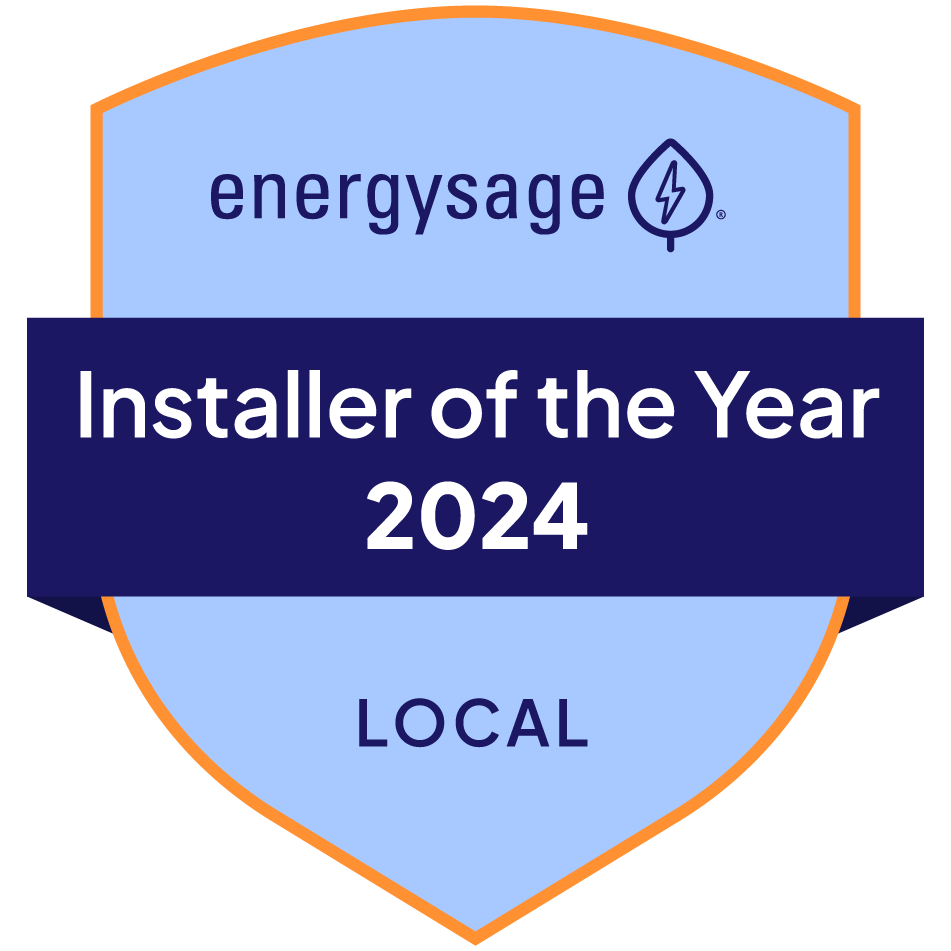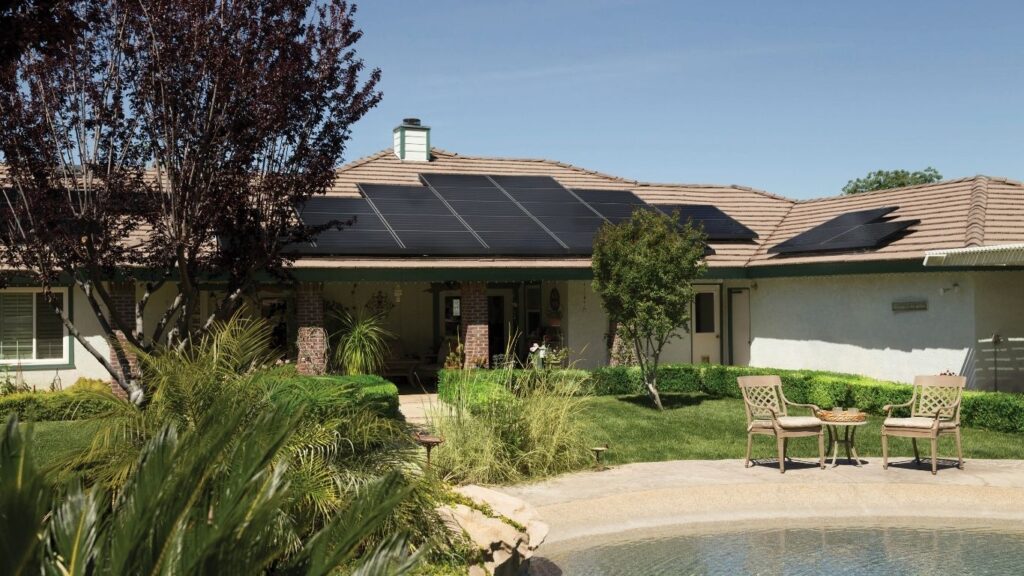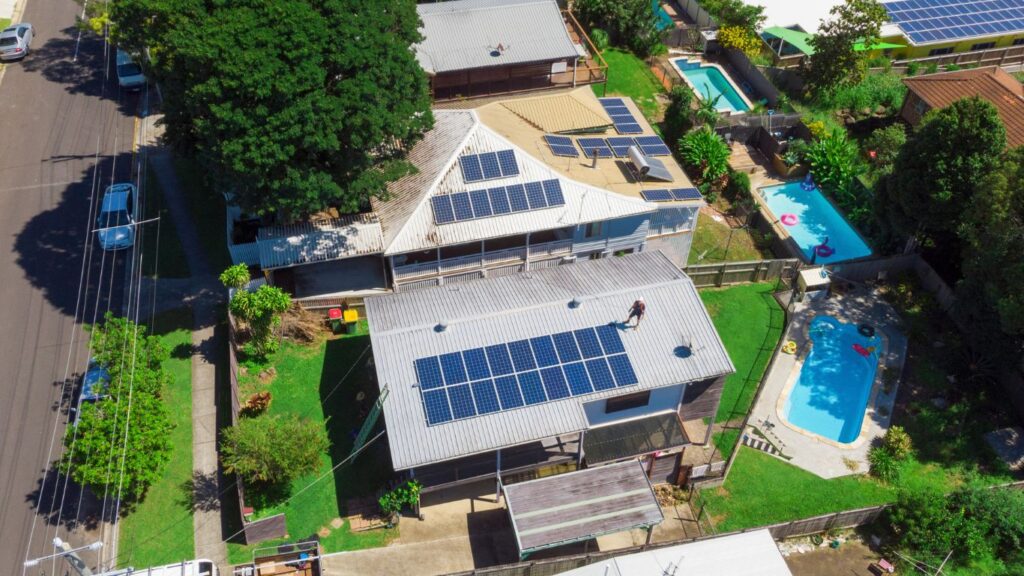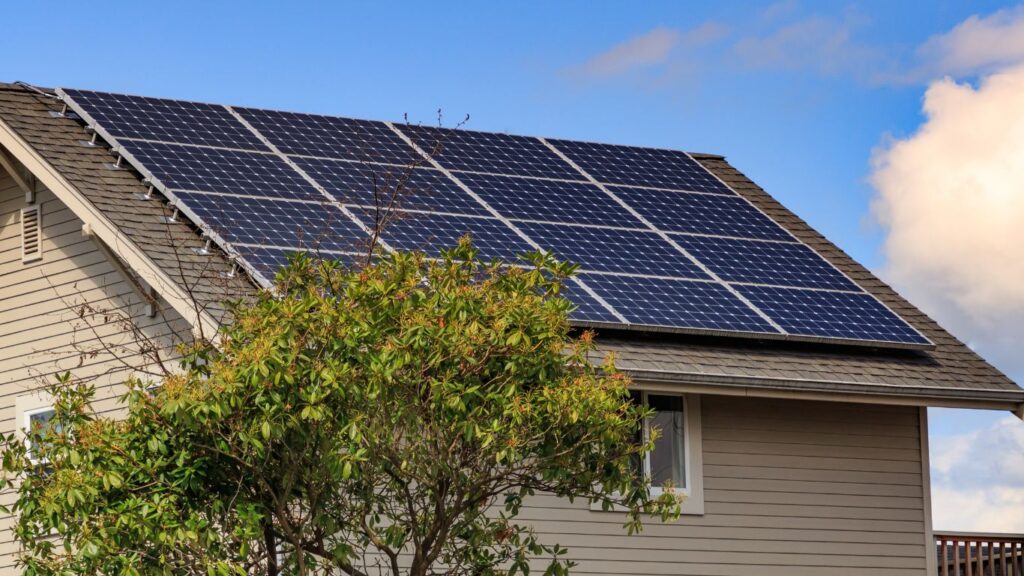Welcome to our 2024 Oregon solar panel incentives guide! As a leading provider of solar energy in Oregon, Energy Solutions is committed to keeping our customers updated on the latest incentives and regulations. As we start 2024, it’s essential to know the available tax credits, rebates, and financing options for installing solar panels in Oregon.
In this guide, we will provide all the information you need to maximize your solar energy investment and benefit from Oregon’s top solar incentives. Let’s get started!
Energy Trust of Oregon Solar Incentives
The Energy Trust of Oregon (ETO) offers cash rebates to homeowners and businesses who are customers of Portland General Electric (PGE) or Pacific Power (PP). These Oregon solar incentives are subject to availability, and change rates, and are calculated on a per-watt basis.
Rebate Qualifications
To be eligible for most Oregon solar incentives, you must live or own a business within PGE or PP’s service area. Your building must be:
-
- Residential
-
- Commercial
-
- Industrial
-
- Government-related
-
- Nonprofit, school-related
-
- Agricultural, or
-
- Institutional.
The solar installation must be new, UL-listed, compliant with all standards, and have warranties on all components. Additionally, the system must meet all applicable codes and additional site criteria such as total solar resource fractions, be grid-tied, and be installed by an approved Energy Trust solar trade ally contractor (like our contractors at Energy Solutions). Residential solar energy systems
Rebate Amount
| Utility | Incentive |
|---|---|
| Portland General Electric (PGE) | $500 flat per project |
| Pacific Power | $600 flat per project |
Portland Clean Energy Fund
The Portland Clean Energy Fund (PCEF) was the first environmental initiative in Oregon created and led by communities of color. Enacted by a local ballot measure, the PCEF was established to combat the disproportionate effects of climate change on people of color and low-income residents by:
-
- Creating and contributing to clean energy projects
-
- Providing clean energy job training programs
-
- Promoting economic and social benefits
The PCEF can also be used to provide grants to nonprofits to help install solar energy systems.
Solar Within Reach Program
The Energy Trust offers a special solar incentive in Oregon called Solar Within Reach, designed to help low-income families afford solar panel installations, which will ultimately lower their energy costs.
Income Eligibility
To qualify for this Oregon solar incentive in 2024, you must own a residence in one of the following categories: single-family home, multi-family home, manufactured home, floating home, or condo. You must also work with an Energy Trust-approved solar trade ally contractor, such as Energy Solutions. Lastly, your gross annual income should not exceed the program limits based on your household size:
| Household Size | Gross Annual Income Maximum |
|---|---|
| 1 person | $62,530 |
| 2 people | $81,770 |
| 3 people | $101,010 |
| 4 people | $120,252 |
| 5 people | $139,492 |
| 6 people | $158,732 |
| 7 people | $162,341 |
| 8 people | $165,948 |
The incentive amount depends on the size of the solar energy system installed, with a maximum of $1.00 per watt and an incentive cap of $6,000 per home.
| Utility | Incentive | Requirements | Battery Storage Incentive |
|---|---|---|---|
| Portland General Electric | $0.90/watt | $5,400 maximum incentive per home | $750/kWh, $10,000 maximum per home |
| Pacific Power | $1.00/watt | $6,000 maximum incentive per home | $750/kWh, $10,000 maximum per home |
ODOE Cash-Rebate for Solar and Battery Backup Systems
The Oregon Department of Energy (ODOE) solar cash-rebate program offers a new incentive to help reduce upfront costs for installing stand-alone solar energy systems or energy storage systems (home solar power plus battery backup). This rebate can cover up to 60% of the net cost of installation, with a cap of $5,000 for solar-only systems and $7,500 for solar plus battery systems.
Eligibility
To be eligible, the installation site must be completed within Oregon state lines and score at least 75% on the total solar resource fraction rating, which evaluates the amount of sunlight the system will receive. All project equipment must be purchased from and installed by an ODOE-approved contractor, like Energy Solutions.
Rebate Calculation:
| Customer Type | Rebate Calculation |
|---|---|
| Low- or moderate-income homeowners | $1.80 per watt (DC) of installed capacity, up to 60% of the net cost* or $5,000, whichever is less. |
| Homeowners not considered low- or moderate-income are also eligible for an electric utility incentive | $0.20 per watt (DC) of installed capacity, up to 40% of the net cost or $5,000, whichever is less. |
| Homeowners not considered low- or moderate-income are not eligible for an electric utility incentive | $0.50 per watt (DC) of installed capacity, up to 40% of the net cost or $5,000, whichever is less. |
*ODOE defines the net cost of a system as the total of all eligible costs minus any incentive provided by an electric utility or by the Energy Trust of Oregon.
Incentive Guidelines for Low- or Moderate-Income Families
To qualify as a low- or moderate-income household, the combined incomes in the household must be at or below the amounts listed below, by household size. This includes all income earners residing at the residence, such as family members and unrelated roommates not part of a separate lease agreement.
| Household Unit Size | Annual Gross Income* | Monthly Gross Income* |
|---|---|---|
| 1 | $52,110.00 | $4,342.50 |
| 2 | $68,143.33 | $5,678.62 |
| 3 | $84,176.67 | $7,014.72 |
| 4 | $100,210.00 | $8,350.83 |
| 5 | $116,245.00 | $9,687.08 |
| 6 | $132,278.33 | $11,023.20 |
| 7 | $135,285.00 | $11,273.75 |
| 8 | $138,290.00 | $11,524.17 |
| 9 | $141,296.67 | $11,774.72 |
| 10 | $144,303.33 | $12,025.28 |
| 11 | $147,310.00 | $12,275.83 |
| 12 | $150,315.00 | $12,526.25 |
| Each Additional Member | $3005.00 | $250.42 |
30% Federal Solar Tax Credit
Great news for this federal tax incentive! The Inflation Reduction Act of 2022 has extended the 30% federal tax credit until 2032, reducing to 26% in 2033, declining to 22% in 2034, and finally phasing out entirely in 2035, unless Congress decides to extend it again. This new legislation supersedes the previous one set to expire in 2024.
Understanding the ITC
The Investment Tax Credit (ITC) operates by providing a 30% credit on the total cost of your solar installation in the form of federal tax credits. For instance, if your system costs $20,000, you would receive $6,000 back in tax credits.
What if my tax credits exceed my tax liability?
No worries. Instead of a cash refund, any remaining credits will be carried over to the next tax year.
| Year | Residential | Commercial |
|---|---|---|
| Now – 2032 | 30% | 30% |
| Year 2033 | 26% | 26% |
| Year 2034 | 22% | 22% |
| Year 2035 | 0% (Expires) | 0% (Expires) |
Oregon Net Energy Metering (NEM)
Net energy metering is an extremely beneficial program that can save you money and significantly shorten the payback period for a solar energy system. As one of the best Oregon solar incentives, it provides long-lasting energy savings in the form of credits.
Net metering policies differ by state, and not all states allow it. However, Oregon has one of the best net metering policies, which lets you sell any surplus energy generated by your solar panels to the grid in exchange for credits on your utility account.
How Does Net Energy Metering Work in Oregon?
Upon installing a grid-tied solar energy system, your utility company will install a special two-way electricity meter to measure both the flow of grid electricity into your home and the flow of energy from your solar panels into the grid.
Based on this, it can determine your net energy usage. If you use more energy than you supply to the grid, you will pay the difference. Conversely, if you supply more energy than you use, you will receive credits on your account.
This program essentially allows you to utilize your solar energy even after it is generated, as many people are at work, school, or otherwise not consuming much electricity during the day when solar panels produce the most energy.
Earn Credits Throughout the Year
When installing a grid-tied solar energy system, your utility company will provide a special two-way electricity meter. This meter measures both the flow of grid electricity into your home and the flow of energy from your solar panels into the grid.
Based on this, it can determine your net energy usage. If you use more energy than you supply to the grid, you will pay the difference. Conversely, if you supply more energy than you use, you will receive credits on your account.
This program essentially allows you to utilize your solar energy even after it is generated, as many people are at work, school, or otherwise not consuming much electricity during the day when solar panels produce the most energy.
USDA REAP Grant for Solar Energy
The United States Department of Agriculture presents the Rural Energy for America Program (REAP) grant. This initiative offers grants and guaranteed loan financing to agricultural producers and rural small business proprietors to enhance overall energy efficiency or implement new renewable energy systems. If you’re a rural agricultural producer or business owner, this Oregon solar incentive is one of the best.
REAP Qualifications
To qualify for this program, you must own a rural farm or business, be financially stable, and have no outstanding federal taxes, delinquencies, judgments, or debarments. Agricultural producers need to earn 50% or more of their gross annual income from their farming activities, which can be in rural or non-rural locations. Small businesses should be situated in rural regions (areas excluding cities or towns with 50,000 or more residents). You can verify your business address’s eligibility with the USDA’s online eligibility map.
Loans and Grants
For REAP loans, there is a minimum of $5,000 and a maximum of $25 million, with all loans guaranteed up to 85% of the total sum. Capital loans have a maximum term of 7 years, equipment and machinery loans have a 15-year maximum term, and real estate and combined real estate and equipment loans have a 30-year maximum term.
Grants can range from $1,500 to $250,000. All energy efficiency improvement projects and any projects costing over $200,000 require a technical report and energy audit before work commences.
Applications are grouped into three tiers based on the total estimated cost, so a $5,000 project isn’t competing against a $500,000 project for funding. Moreover, applicants must cover 75% of the project cost if applying for a grant and 25% of the cost if applying for a loan or a loan and grant combination.
Salem Electric Solar Incentive
Salem Electric provides a solar incentive program for its residential clients. Solar energy installations must be 25 kW or smaller to qualify, and applicants need to apply for the incentive and receive approval before any work starts on the system. The system must be net-metered, meet ODOE requirements, and be installed by an ODOE-certified contractor.* The incentive is provided at a rate of $300 per kW, capped at 50% of the project’s total cost or $1,500, whichever is lower.
*Energy Solutions is an ODOE-certified contractor.
PGE Renewable Development Fund (Nonprofits)
Portland General Electric provides a comparable program for Oregon nonprofits, funded by voluntary contributions. The Renewable Development Fund supports solar projects under 10 MW that are interconnected to PGE’s grid or generate power delivered to PGE through a power purchase agreement. Funding can also be allocated for research and development projects and educational initiatives.
Pacific Power Blue Sky Community Initiative (Nonprofits)
Pacific Power offers their Blue Sky program that enables customers to voluntarily contribute extra funds to their monthly utility bills. These funds are then used to support community-based renewable energy projects within Pacific Power’s service area. If you’re interested in leading a community-based project, you can submit your proposal to Pacific Power and request funding.
All projects must be grid-connected, under 10 MW in size, non-residential, and locally owned. Each project is assessed on factors such as feasibility, cost, and community benefit, among others.
Is Solar Worth It In Oregon in 2024?
Solar panels are worth it in Oregon in 2024. The state boasts some of the nation’s top solar rebates and incentives, significantly lowering the initial cost of installing a solar energy system, shortening the payback period, and increasing your savings. Generally, the moderate climate ensures that your solar panels won’t be severely impacted by heat-related efficiency losses, as can occur in the southwest and other hot climates.
Contrary to the perception of rainy Pacific Northwest weather, Oregon enjoys extended sunny summer days and only moderate snowfall. Furthermore, modern solar technology enables the harnessing of solar energy even on cloudy days.
On average, Oregon homeowners and business owners who invest in solar energy systems save around $800 per year on their energy expenses while contributing to environmental protection and transitioning away from fossil fuels.
Find Out Which 2024 Oregon Solar Incentives You Qualify For Today!
At Energy Solutions, we are committed to making the transition to solar as straightforward and smooth as possible for you. Our team of professionals has amassed years of experience in designing and installing tailored solar solutions for homes and businesses in Oregon.
We offer complimentary consultations to discuss your unique energy needs and answer any questions you may have about the benefits of solar. During the consultation, we’ll evaluate your property, review your energy goals, and provide an estimate of the costs and financial advantages of adopting solar power.
To schedule a consultation, contact us by phone at 503-694-4931 or complete a form on our website. Begin your journey toward a cleaner, more sustainable energy future with the help of our team.





